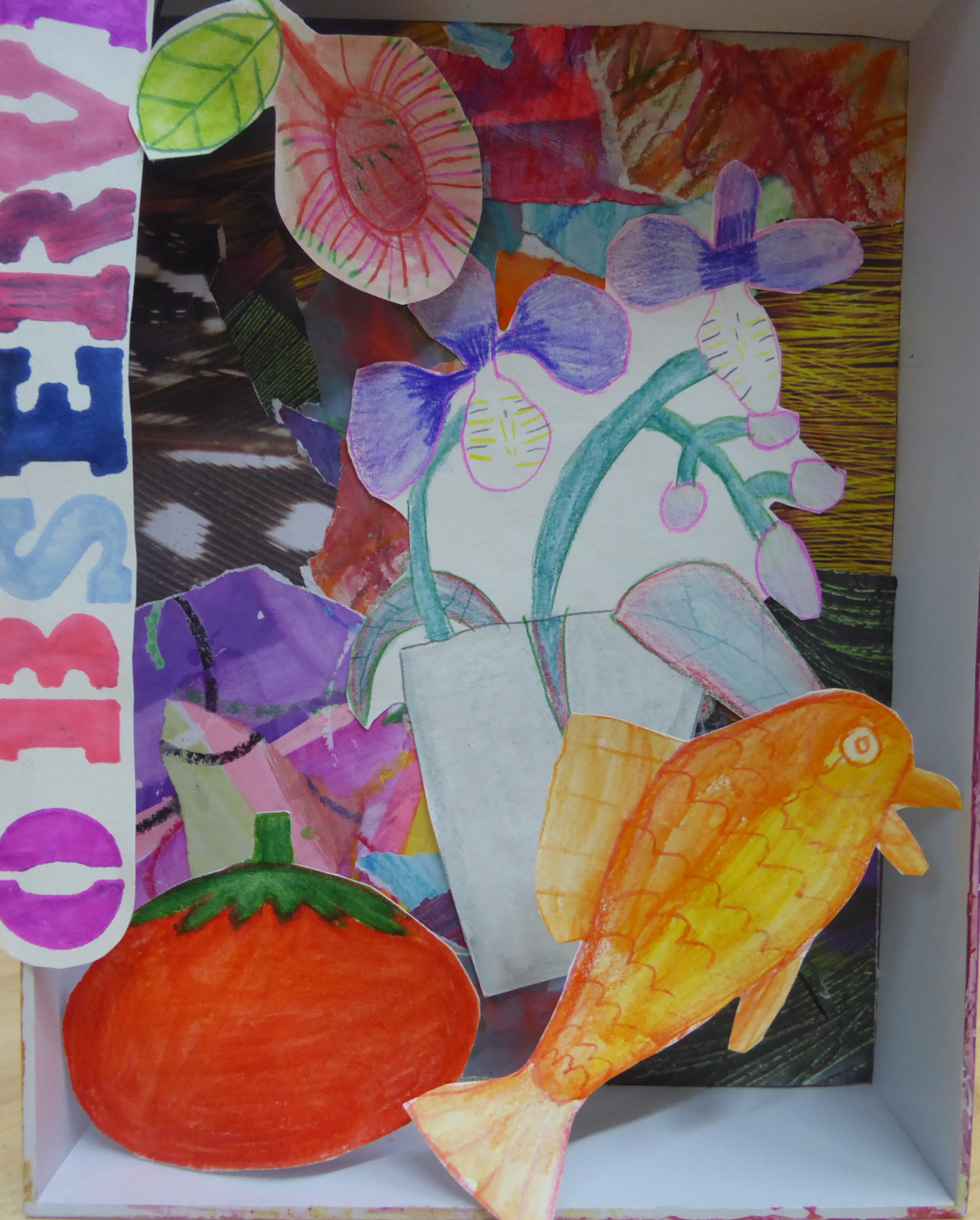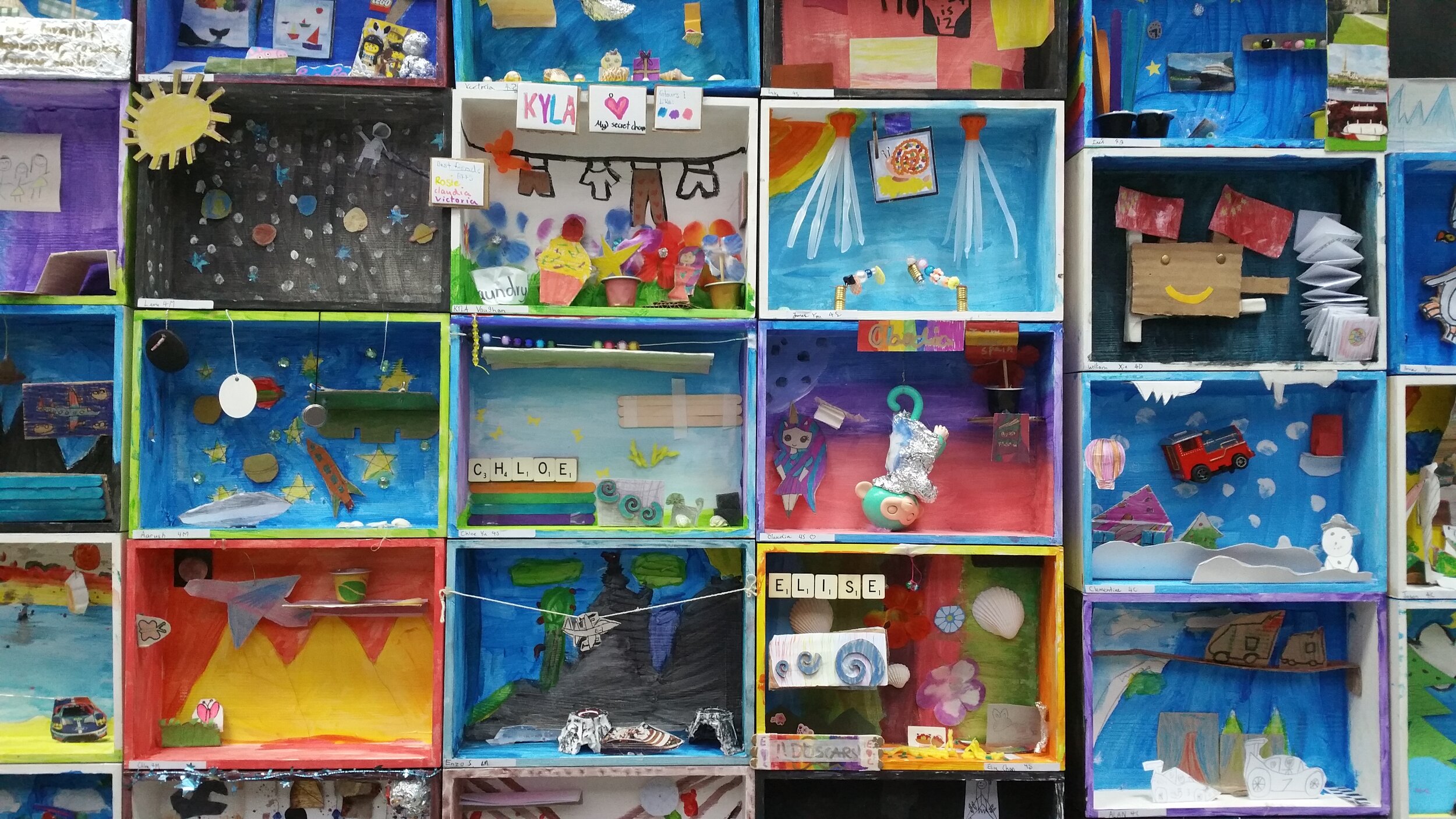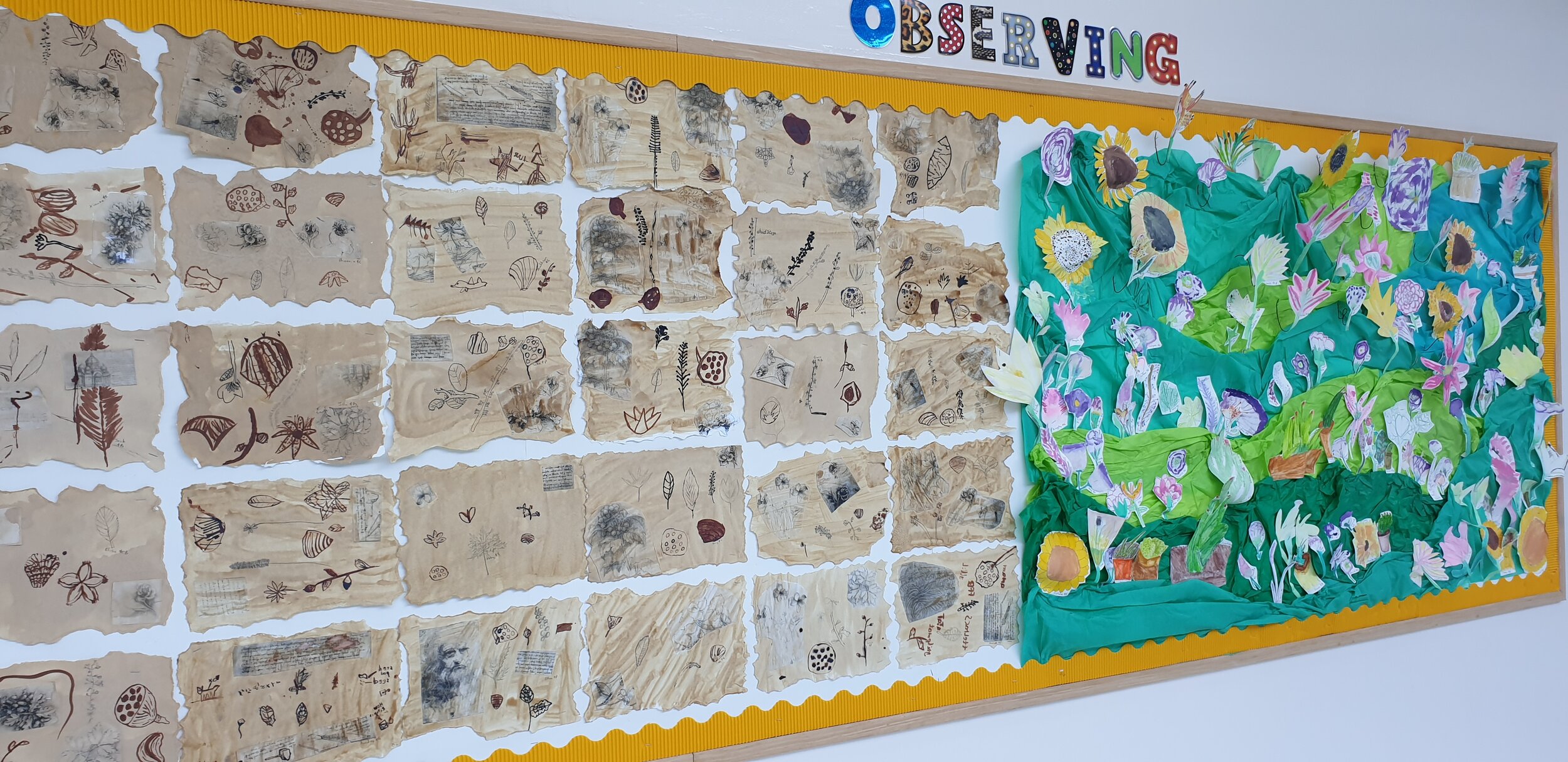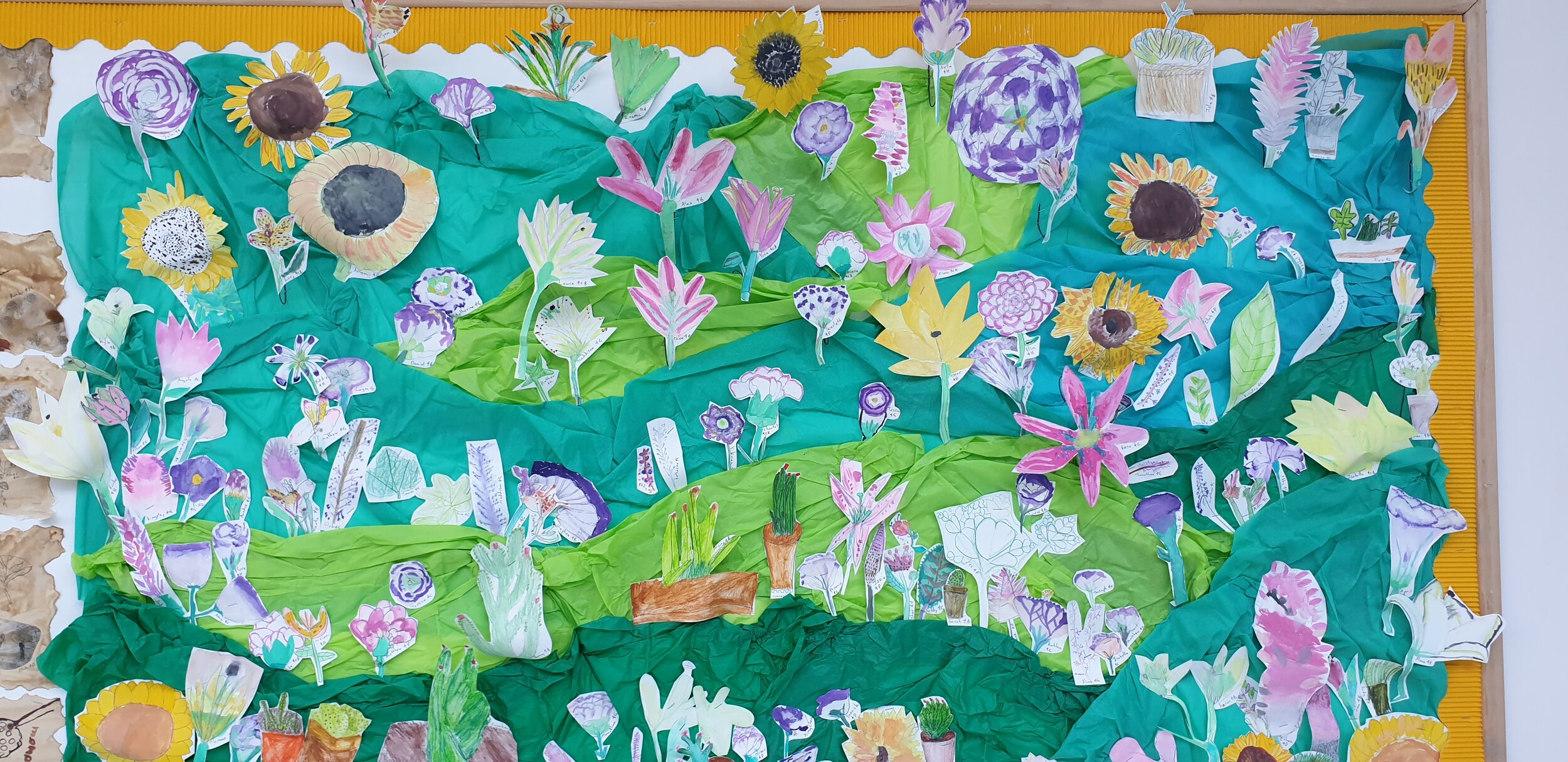Mixed Media, Collage & Textiles
Mixed Media Shadow box inspired by Joseph Cornell & illustrator Katie Scott
Mixed Media
An interesting way to help students develop specific art skills is to create a mixed media project where each week students make part of a larger piece of art. Over the years we have grown to love mixed media Shadow boxes inspired by the artist Joseph Cornell and various contemporary artists. We used to buy small wooden boxes but now recycle our school’s sturdy computer boxes instead. We have found this to be a very effective way to link together a range of specific skills such as collage, abstract painting, drawing from observation, watercolour pencil techniques, exploring fonts and powerful words etc.
Our endangered animals are watching you….
Collage
When teaching students about collage, there are some wonderful artists and authors that go hand in hand, such as Australian artist Jeannie Baker and along with photomontage artists like American artist Barbara Kruger. Virtual Collage pieces of art would certainly work well for online learning.
Some of the best collage ideas I have ever seen involved students creating large, abstract pictures using acrylic paint and also creating their own ‘paper’ by using various paints and pattern making techniques. The handmade pattern paper is then ripped into long strips and used these to create animal fur or skin.
Handmade Sleeping masks by year 1
Textiles
Textile work links in well with design and technology projects, however the reality of completing specific sewing projects with younger students can be very tricky. Creating a genuine real-life link to sewing projects we have found to be more useful, for example year 1 students learning about the importance of sleep then asked to design and make sleep masks. Students wanting to make products to sell at a Christmas fair chose hair scrunchies, headbands and pencil cases. I have seen wonderful examples of batik artwork made and linked with units on space and silk screen designs printed on shoulder bags and gift tags. We have often studied Kente cloth patterns from Ghana and students have made their own designs on fabric or on paper and woven those together to make ‘cloth’,
Year 3 students who had been learning about different art styles from around the world designed and created their own Mexican Alebrijes (beautiful monsters). We have used soft material for sewing before but find that for younger students holding a needle and pushing it through material requires a lot of fine motor control and is very difficult, therefore this year we are trying soft foam sheets instead.
Our year 5 students are working on an advanced textiles project where they are required to design and make a real piece of clothing in a team out of recycled materials such as cereal boxes, plastic bags, cardboard, bottle tops, plastic bottles, etc. These finished designs will be worn by students in a fashion parade to promote awareness of sustainability around our community. Students will learn different ways to join these materials using PVA glue, hot glue, staples, sewing and fusing plastic with a hot iron.












